It was our first time in Costa Rica, and we were so happy to find a free walking tour of its capital San Jose to start our stay here. We were curious to discover this town. We knew the country for its well-known parks and its concern for eco-friendly tourism, but we hadn’t heard a lot about its main city.
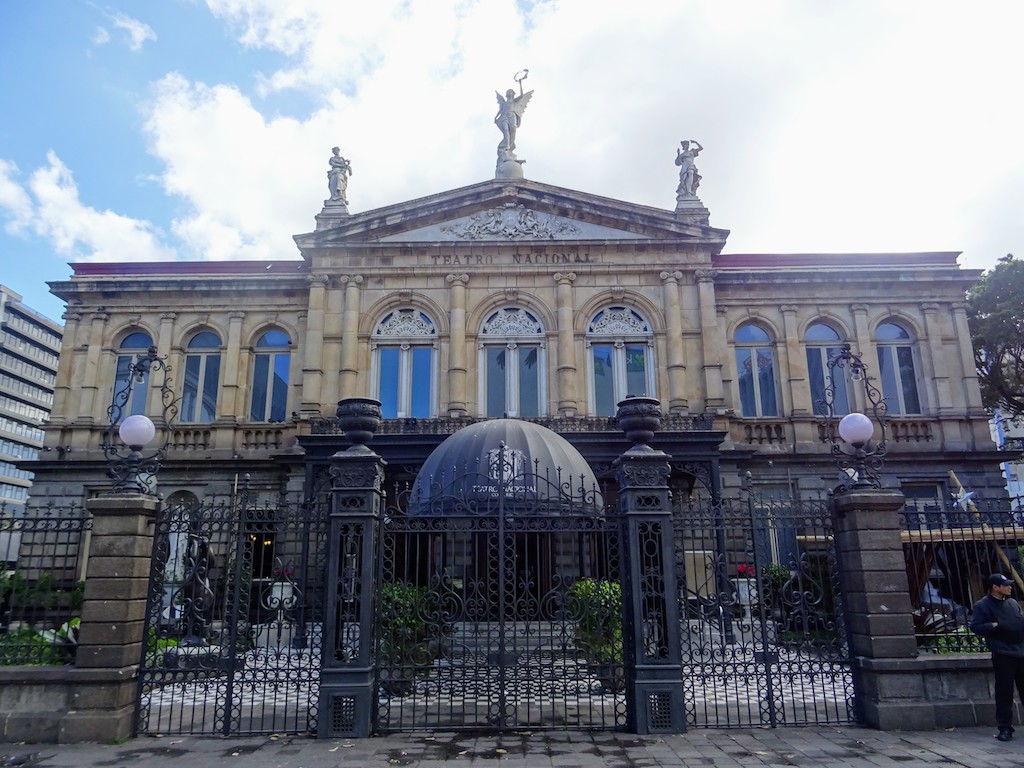

We meet at 9:00 a.m. in Juan Mora Fernandez Square, Costa Rica’s first elected president in 1825.
To begin with, the guide introduced us to his city, as well as the National Theater of San José in front of which we are. He strongly advises us to visit it, which we did in the following days.
I have devoted an entire article to the National Theater, a magnificent building filled with history. And the visit took an unexpected turn!
Let’s go for a bit of history of San Jose
I’m going to keep it short, I promise!
The city was established in 1738, named San Jose in honour of Joseph of Nazareth, and did not become the capital of the country until 1823 in place of Cartago. It is one of the safest cities in Latin America and known for its quality of life.
I’m dubious. It is true that we’ve never had any problems, that we have always been pleasantly welcomed and that I’ve never felt threatened. But despite everything, the city seems barricaded. Houses are protected behind high fences on which we sometimes see electrical wires or barbed wire. Some colleges are surrounded by fences like prisons. In fact, we still don’t know if it’s to keep students inside or thieves from getting inside. 😊 At night, all the shops have full iron shutters behind which the windows disappear. To me, it doesn’t look like a safe place. But our guide tells us that it’s in the habits of the inhabitants of Latin America to protect their homes and buildings, but that frankly there is nothing to fear. I’m still dubious 🤨
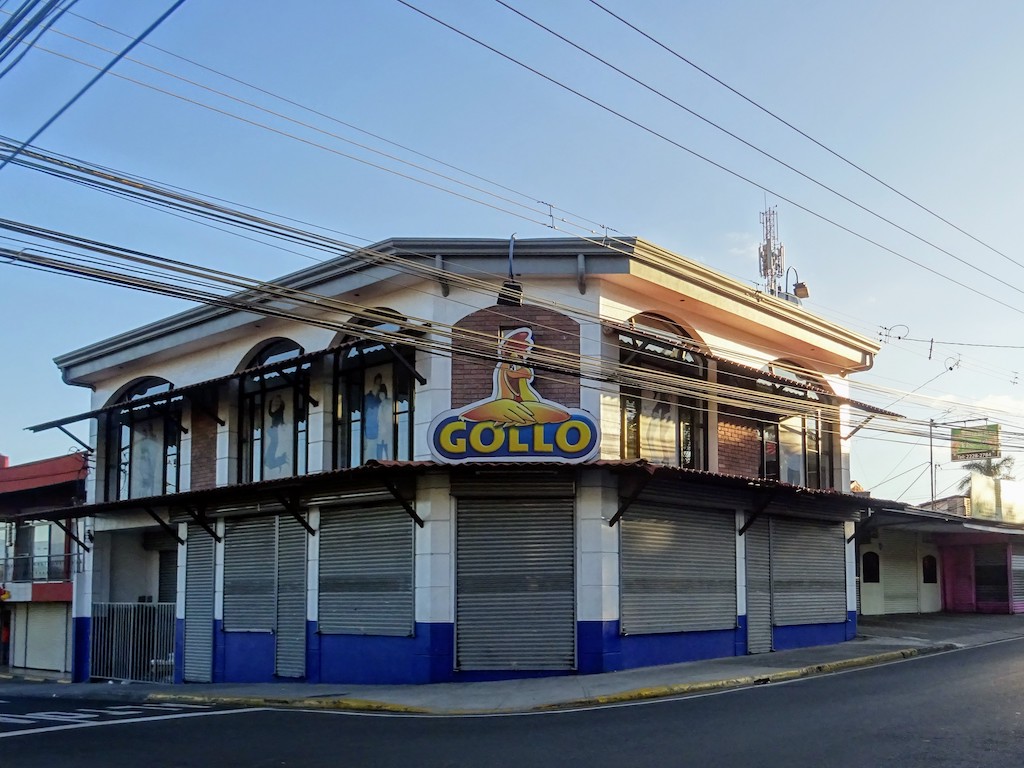

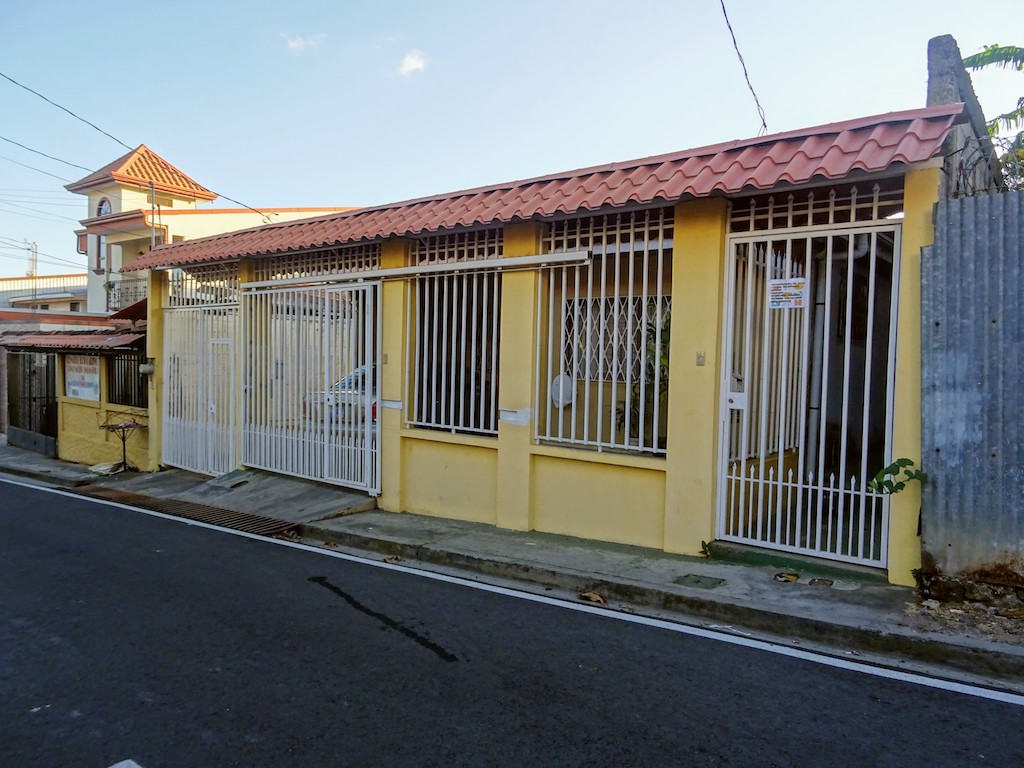

Hight school of Young Ladies
With these words, we begin our visit, and we stop in front of the higher college of girls, Colegio Superior de Señoritas, created in 1888 and a fundamental pillar of women’s education in Costa Rica.
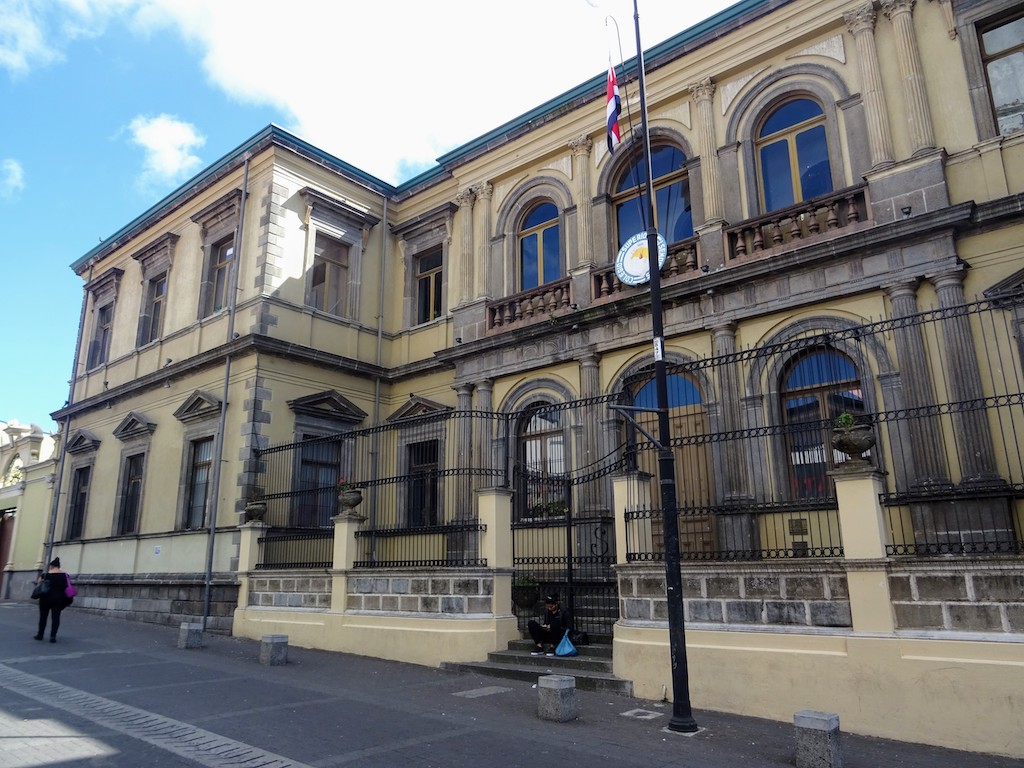

Different fields are taught: political, social, cultural and artistic. But the most remarkable fact is the active position of the students, teachers and the director in the fight against the dictatorship of the Tinoco brothers, in June 1919. Protests took place in the streets and ended with the burning of the newspaper La Información, then detained and controlled by the authorities. And in 1923, the college’s staff and students helped found the Costa Rican Feminist League, leading the country’s first explicitly feminist organization to push for women’s suffrage. For this reason, and to remember, the college remained a girls’ college, the last of Costa Rica.
So every day, at the end of class, the boys come to parade in the street and watch the girls go out… It looks like a fun show to watch.
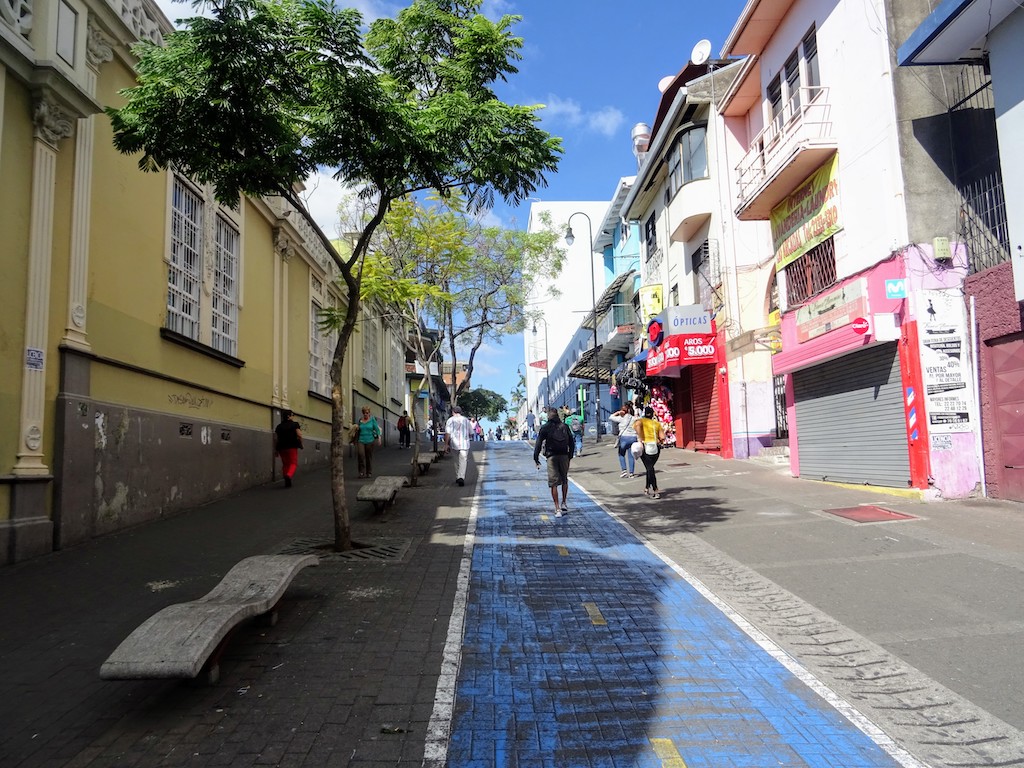

We take a pedestrian street with a blue bicycle lane in the centre. We can’t miss it! There are many bicycle lanes in town, but very few bikes. And when we asked our guide if it’s because of the traffic, he tells us that it’s more because of the shape of the city. Not a single flat part!
Place of social Guarantees
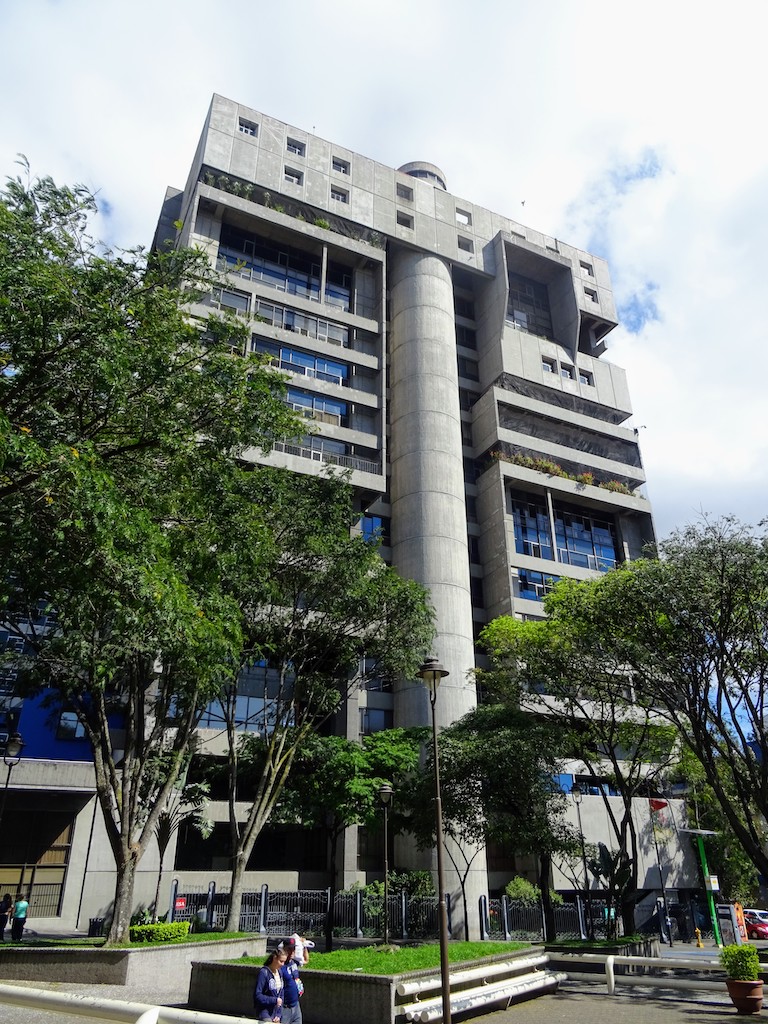

The name of the square is surprising, but the country is very attached to the social, educational and cultural benefits granted to citizens. And this square, built in 1993, is there for everyone to remember.
I think the visit will revolve a lot around the advantages that Costa Ricans have obtained. Our guide is so proud of it!
The place is on 5 levels. On the first stands a statue of Rafael Angel Calderon Guardia, former president who promulgated the law on social guarantees for the people. The other levels symbolically commemorate social security, the University of Costa Rica, the Labour Code and the cheap home program.
Some more details from our guide:
- Every Costa Rican has access to “free” care financed by their taxes.
- A final step forward in terms of social rights: they have just passed a law that allows everyone to decide their gender, and put it on their Identity Card. Costa Rica is now part of this global change that says people should not be forced to wear an identity marker that does not reflect who they are.
- In 1948, the country abolished the army to use the budget allocated to it to finance the universities and the three major hospitals.
I’m learning a lot about this country. And I’m really pleasantly surprised by what I discover.
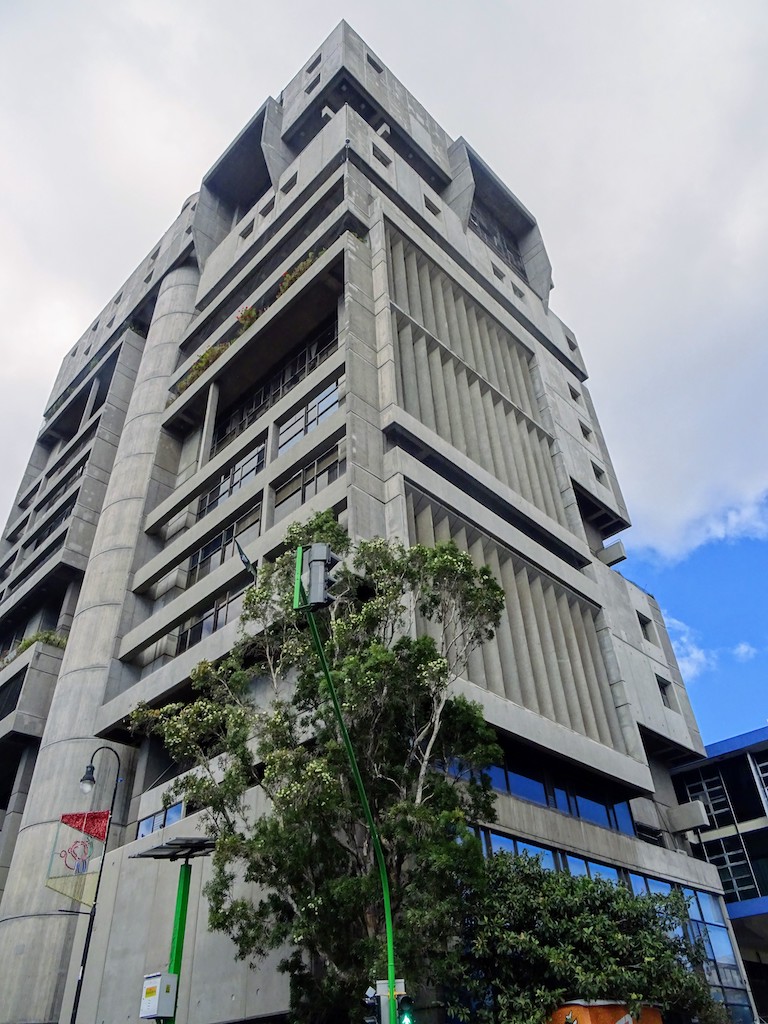

Behind us stands a square concrete building. I wouldn’t have particularly noticed it if our guide hadn’t showed it to us, pointing out its brutalist architecture, characterised by simple block structures that often include bare building materials such as concrete. Very rare in Costa Rica.
The tour continues.
China town in San Jose
The Place of The Arts
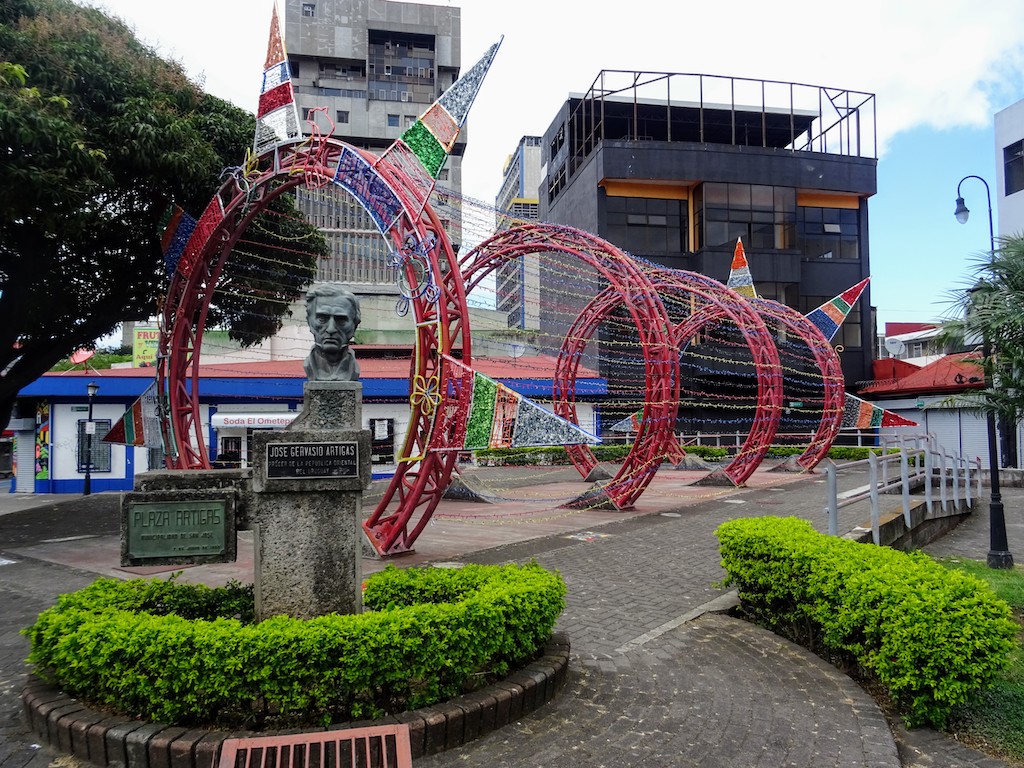

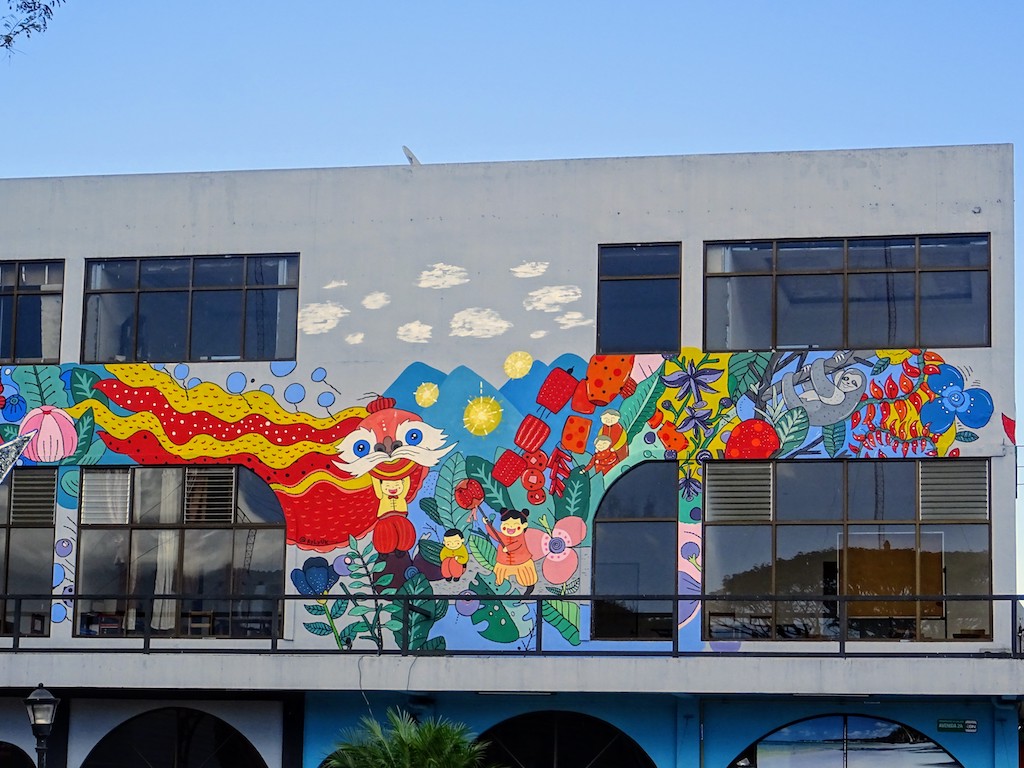

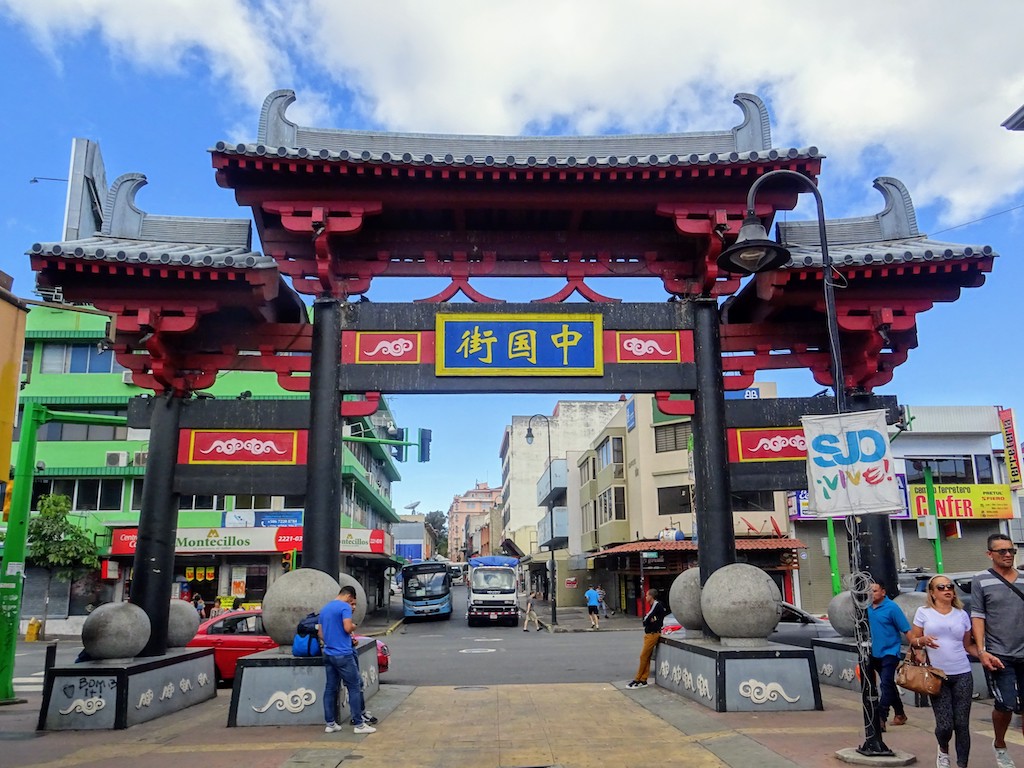

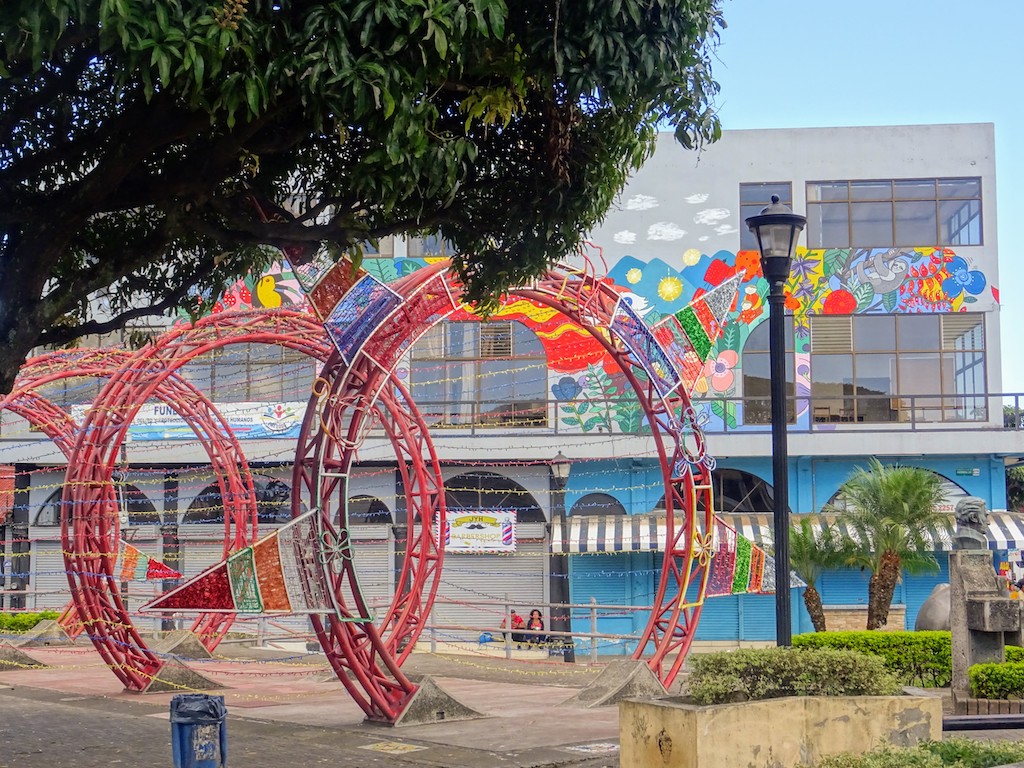

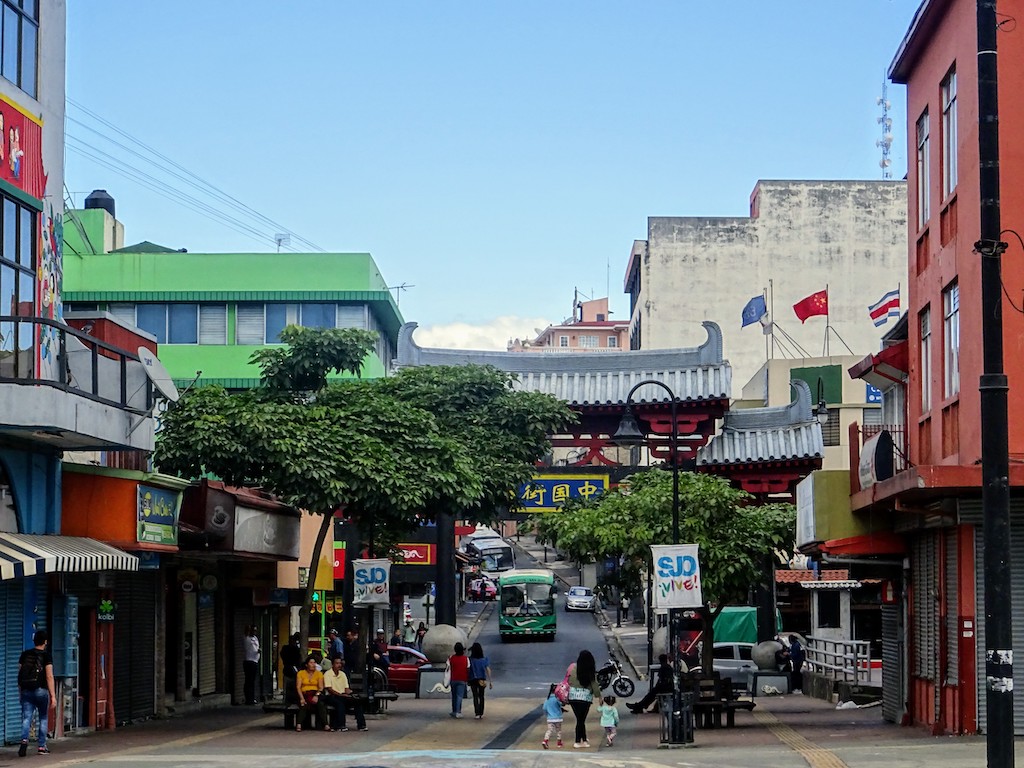

This is not Chinatown as you would expect with its shops and restaurants.
The reason is that the creation of the gate and the neighbourhood took so long that Chinese businesses had to move further away to be able to work. So when the work was finally completed, none of them came back to start over. Hence a Chinatown without Chinese shops!
A little anecdote. It would appear that when they arrived in San Jose, and to show their willingness to integrate, the Chinese would have financed the former national football stadium of the city. You’ll have guessed that football is the national sport and that Costa Ricans are all fans of it!
The church of Loneliness
In front of us stands Iglesia de la Soledad.
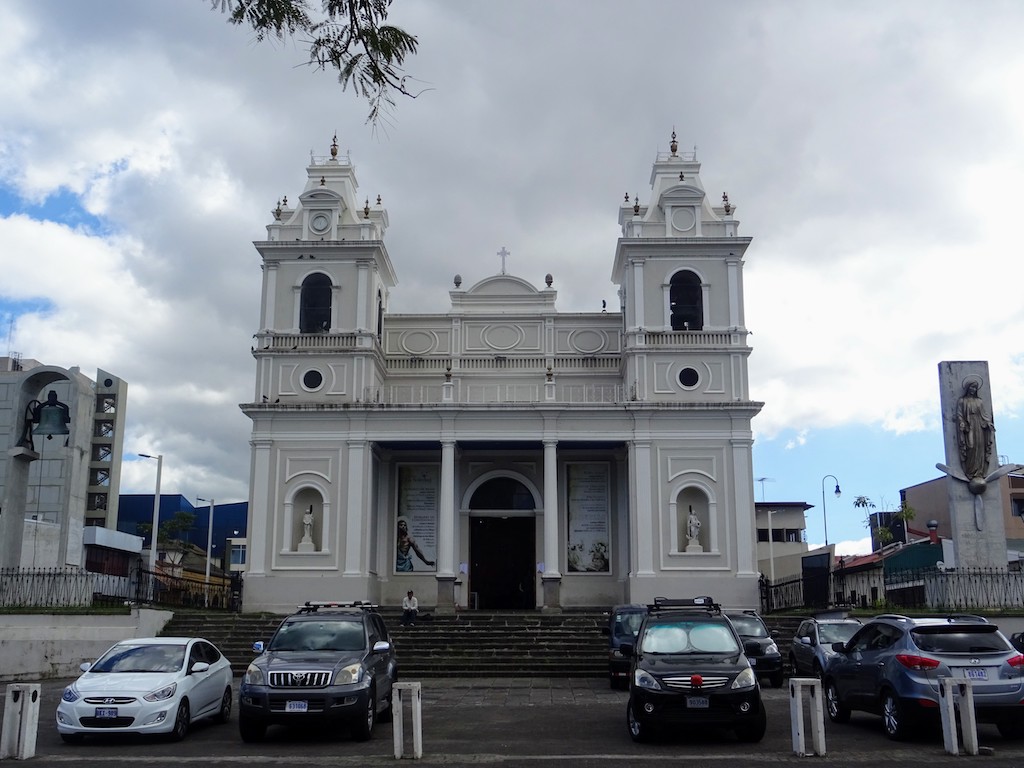

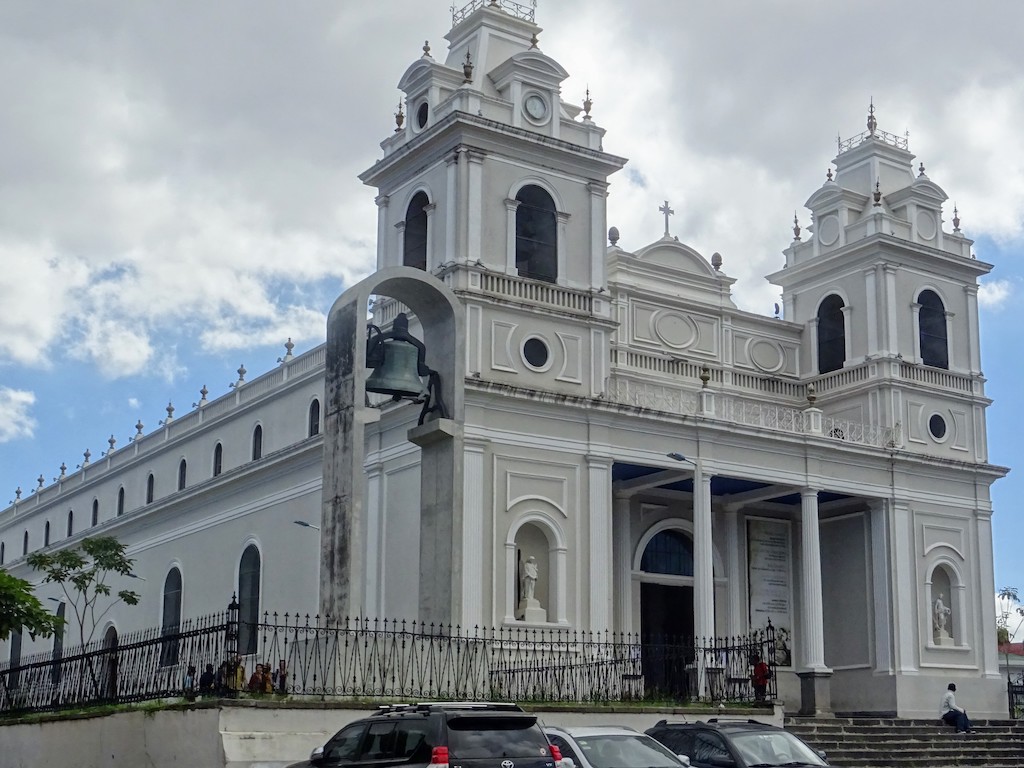

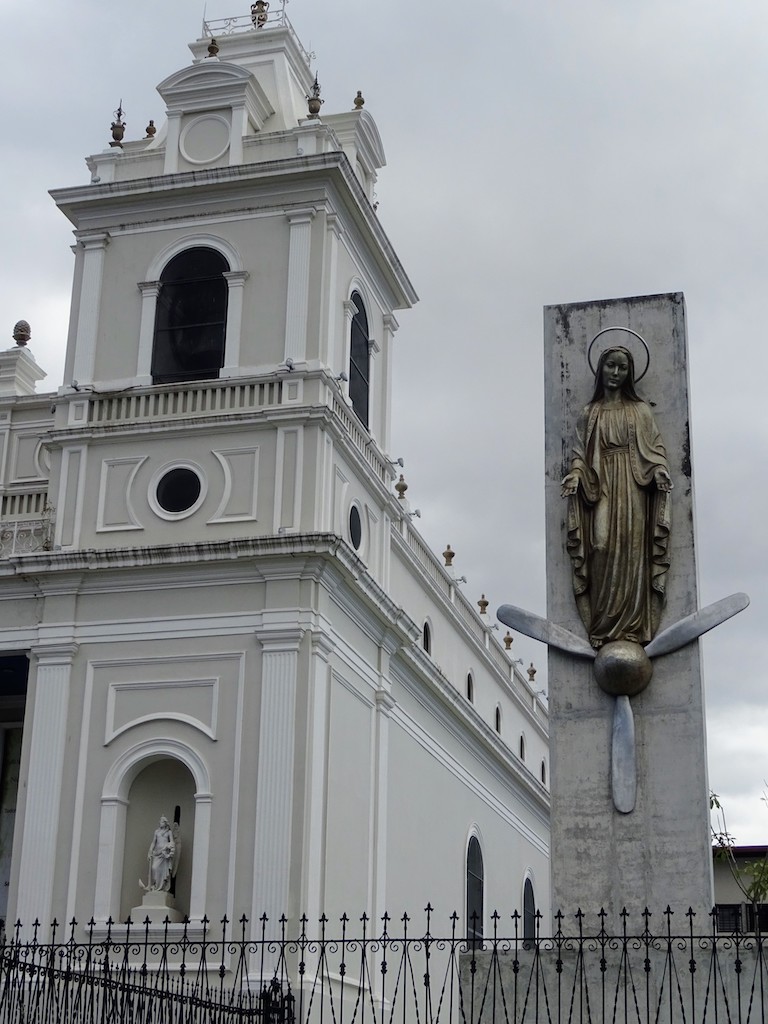

The statue of the virgin is surprising. I had to look at it twice to make sure it was on an airplane propeller! Not really common.
And our guide explains.
The chapel at JFK Airport in New York owned Our Lady of Heaven. When JFK Airport renovated its chapel, they donated it to St. Vincent de Paul’s Church in Manhattan. It is closely linked to the community of San Jose. There is indeed a cooperative program between the two churches that allows priests and seminarians from New York to come to Costa Rica to learn Spanish and then be able to serve their Hispanic community. Thus, when St. Vincent de Paul’s Church in Manhattan was restored, the priest of San Jose was offered the statue, along with a 2.5-ton bell, the largest in the country.
The Guanacaste
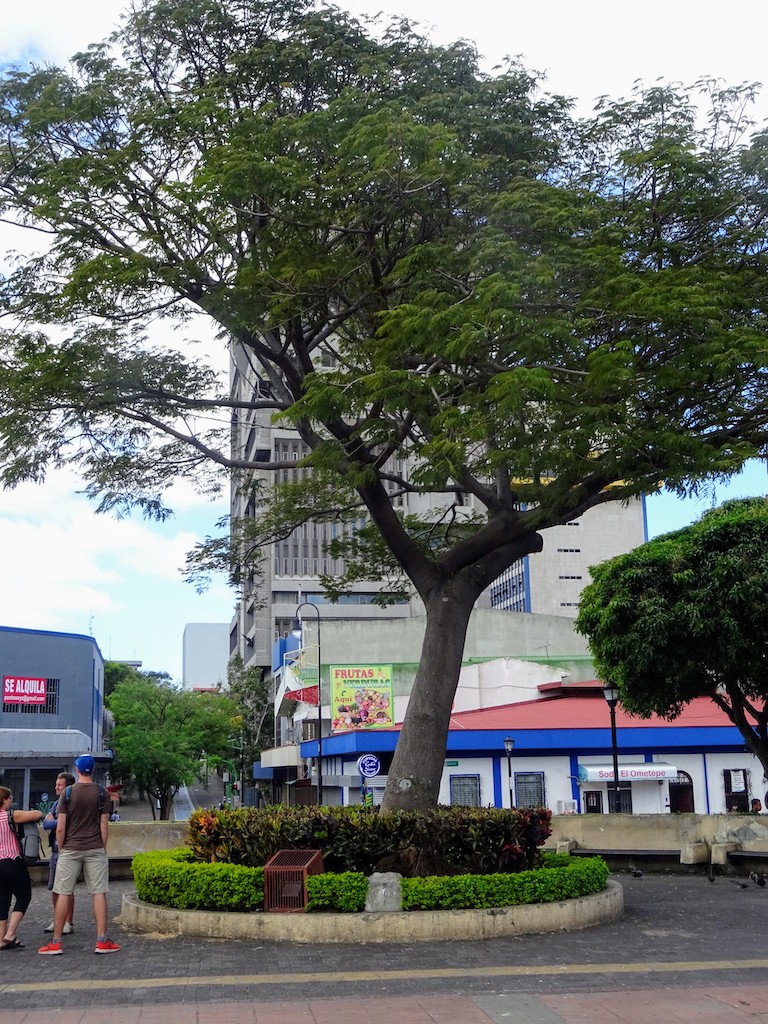

We turn our backs on the church, and find ourselves in front of a beautiful tree, the Guanacaste, which is the emblem of Costa Rica. Its wood is water resistant, easy to work with, and is used for local crafts and furniture manufacturing. Costa Rican used fruit seeds for their cleaning properties as laundry.
John Lennon statue
And another surprise. On a bench, turning his back on the Church, a statue of John Lennon by Cuban sculptor José Ramon Villa entitled “Imagine all the people who live in peace”.
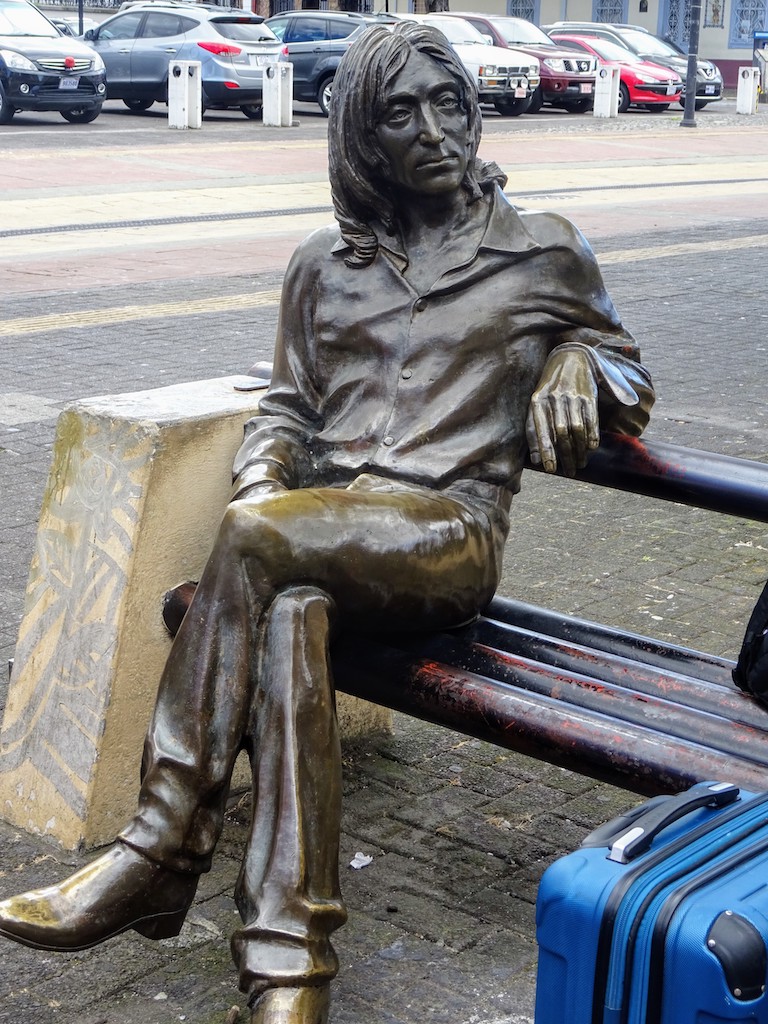

This statue was erected to promote the peace and love movement that Lennon has always wanted to share and which identifies with the country, and attracts tourists to the capital.
Locals challenged it for two reasons
- Its location. It is where Costa Ricans protested against the Beatles in 1966 and burned their records when they declared themselves “more popular than Jesus.” That would be the reason why the statue would turn its back on the church…
- The fact that the sculptor is not Costa Rican.
However, it has been inaugurate with great fanfare, notably by the concert of the Beagirls a 2 girls Costa Rican band which play the Beatles’ songs.
We leave the square by the Chinese gate, and we head to the presidential quarter.
The round stones
On our way, we stop in front of the National Museum of San Jose, and our guide introduces us to round stones discovered in southern Costa Rica.
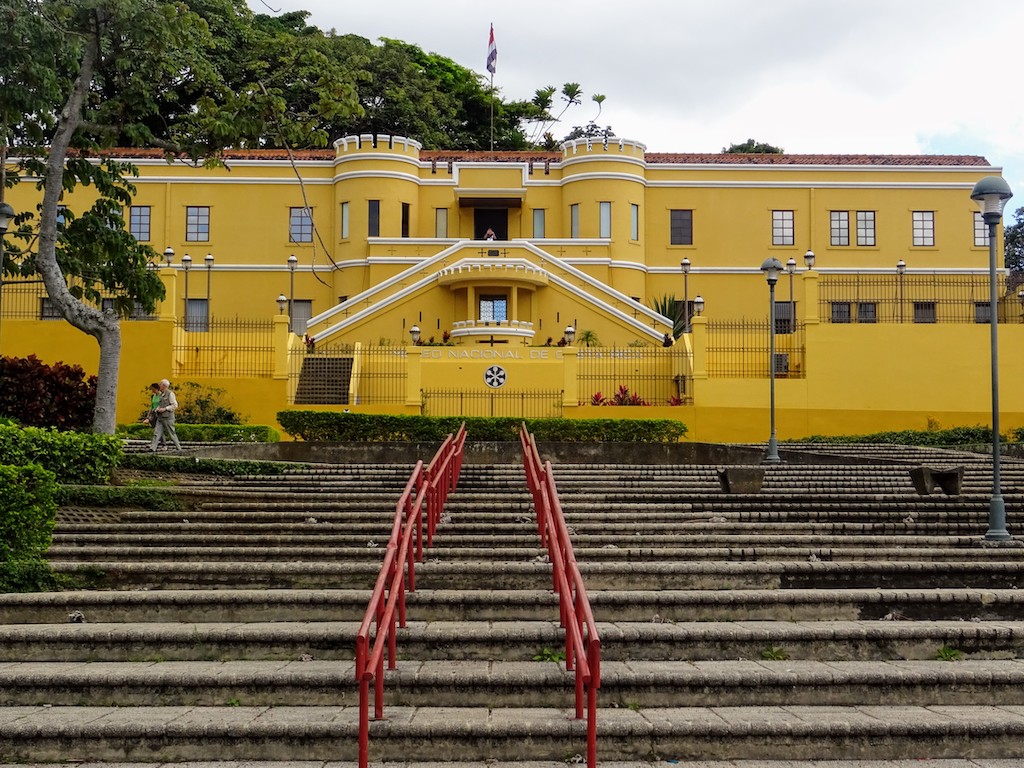

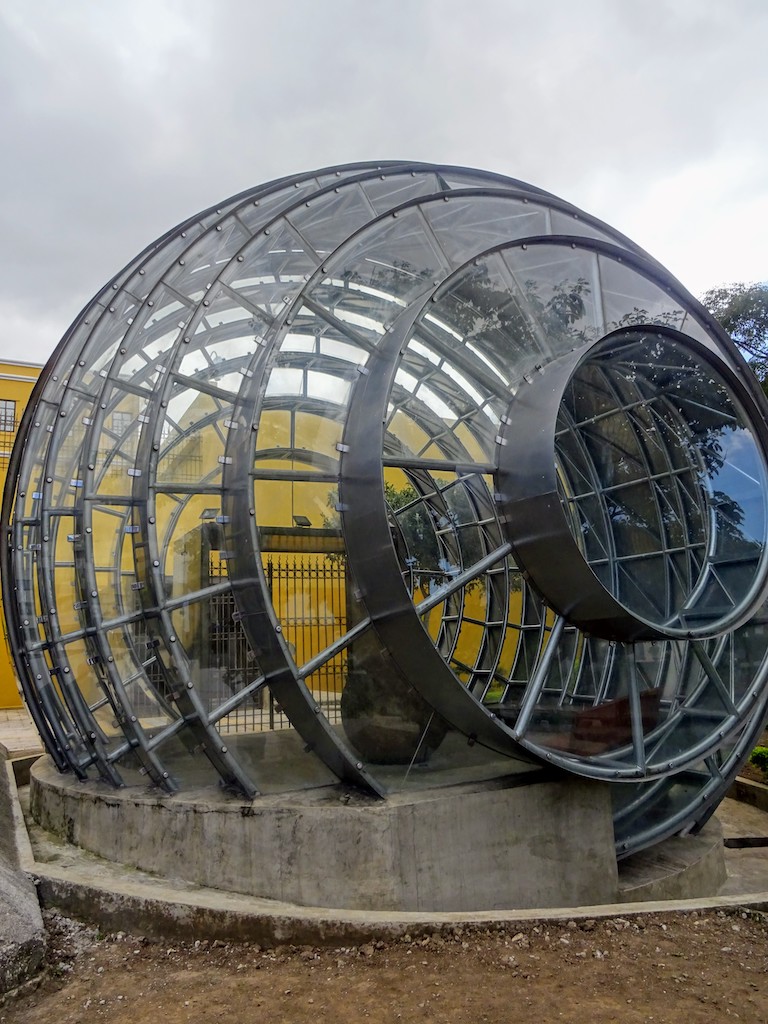

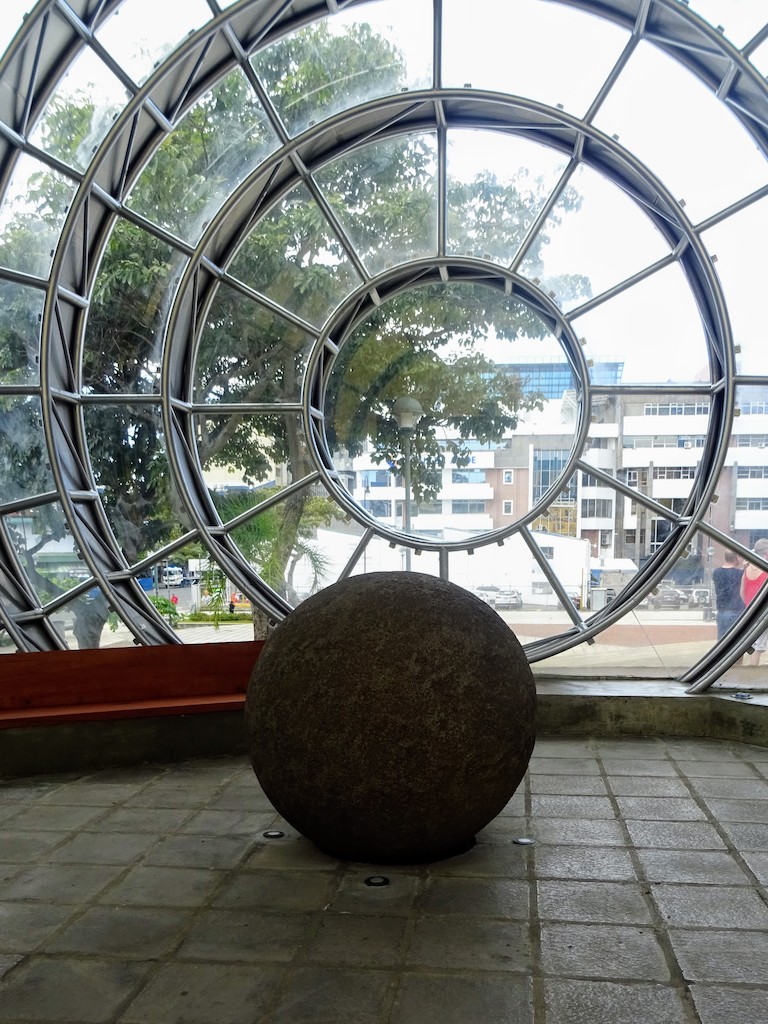

These stones are very popular, but their exact meaning remains unknown. They are made of granite, a rock found only on the Caribbean coast of Costa Rica and their size range from 2 cm to 2 meters in diameter. They are supposed to have been carved with hammers made from other stones and polished with sand. No one knows how the natives of the pre-Columbian era transported these huge blocks across the country.
As you can see, the mountains are not far away!
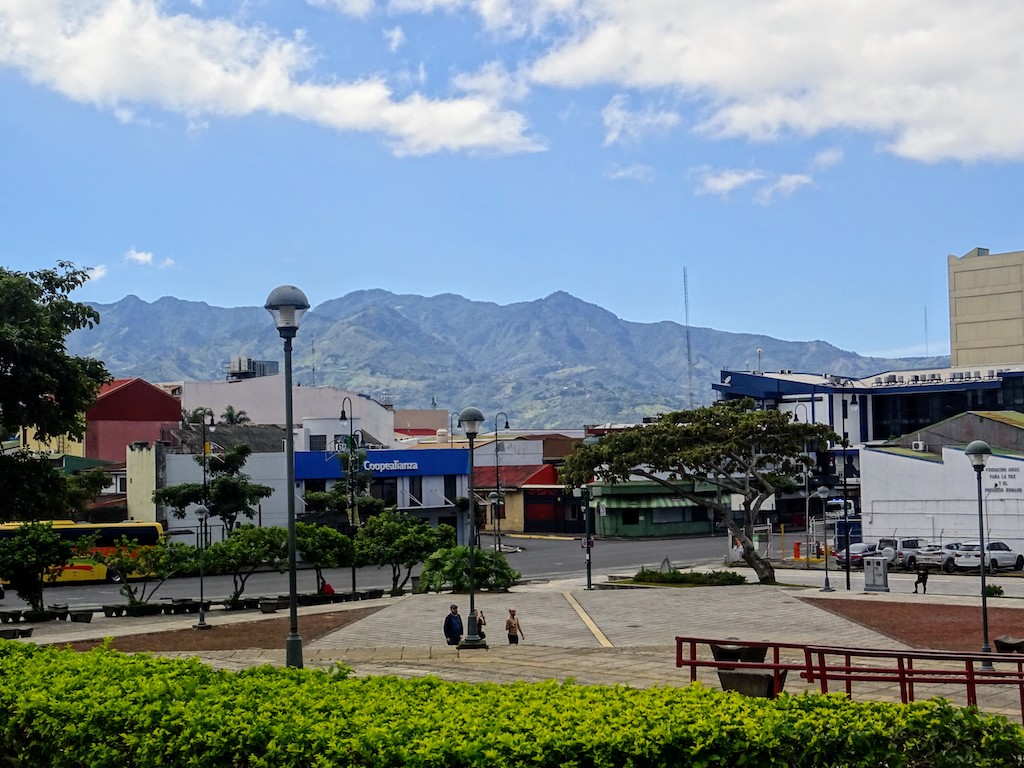

The presidential quarter
Here we are in the presidential quarter. Nothing to do with what we know. No reinforced guard posts, no police on every street corner.
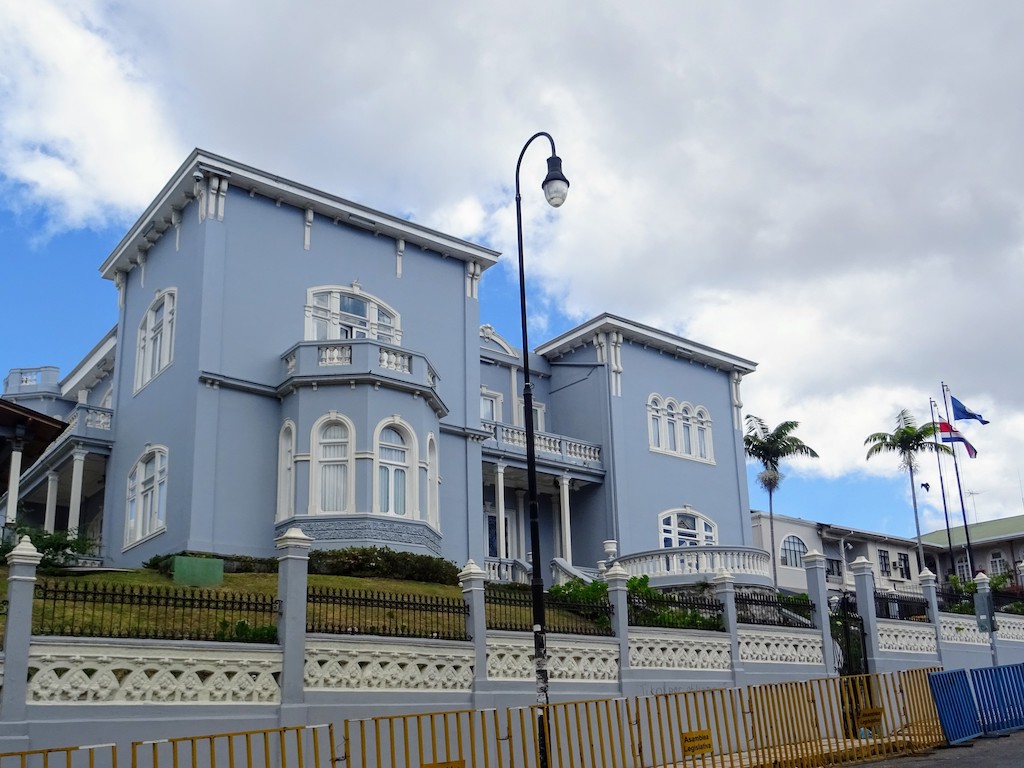

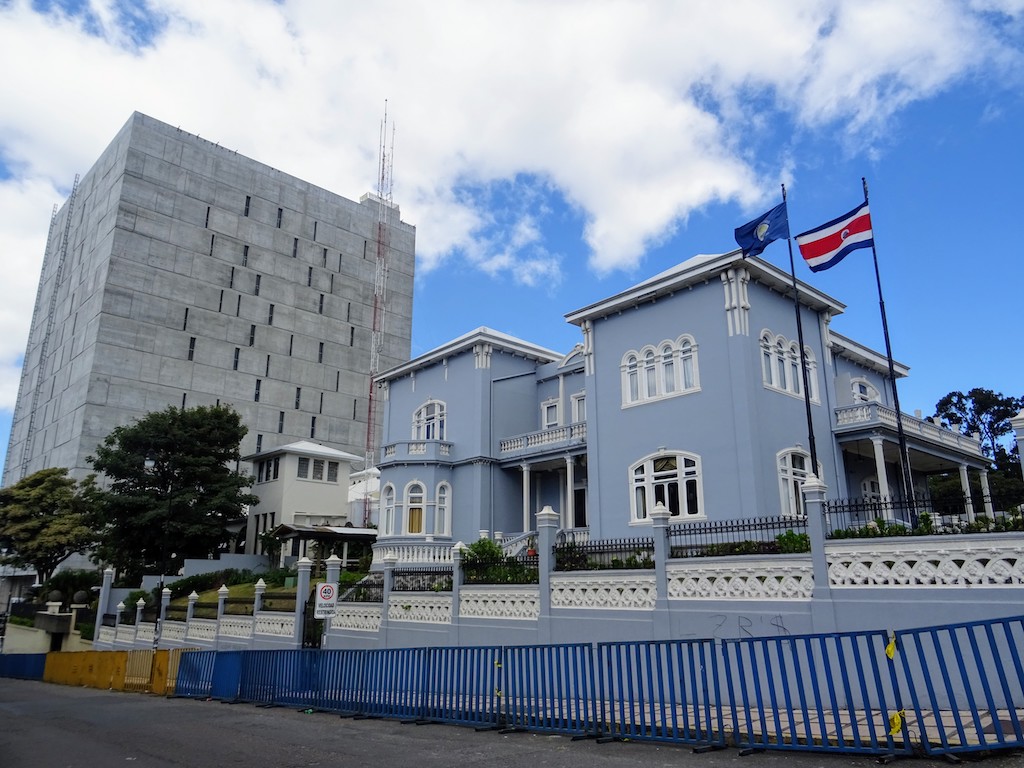

The presidential house, called the Blue Castle, is in fact not inhabited by the president, but is mainly used for meetings. The current president since 2018 is Carlos Alvarado Quesada. He was born in 1980, and was a writer, journalist, political scientist and Costa Rican politician. He does a lot for ecology in the country and renewable energy, and is very close to the people.
Apparently you can meet him in town… I’m going to keep my eyes open! He even came to chat once with a group of tourists who were visiting the city.
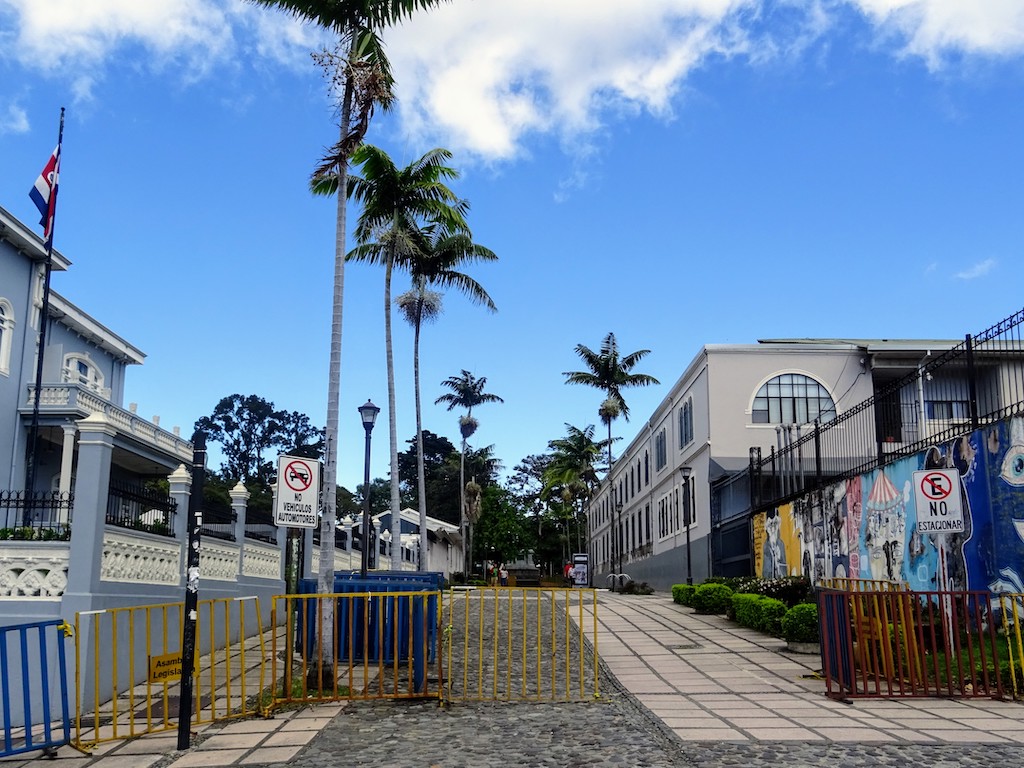

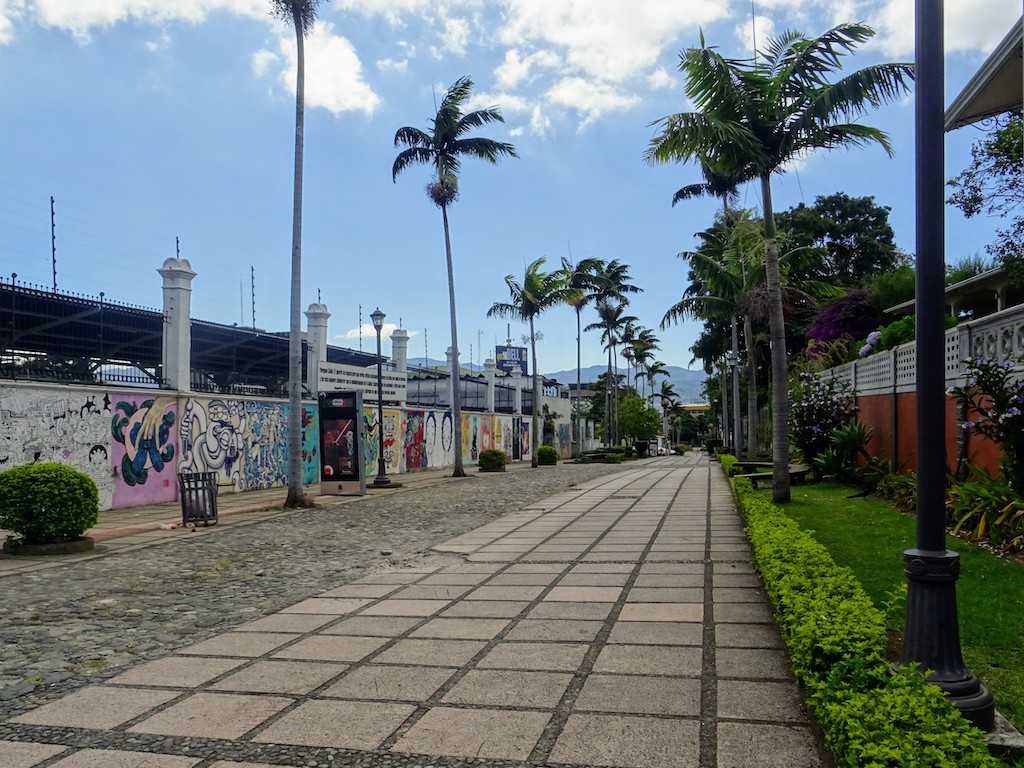

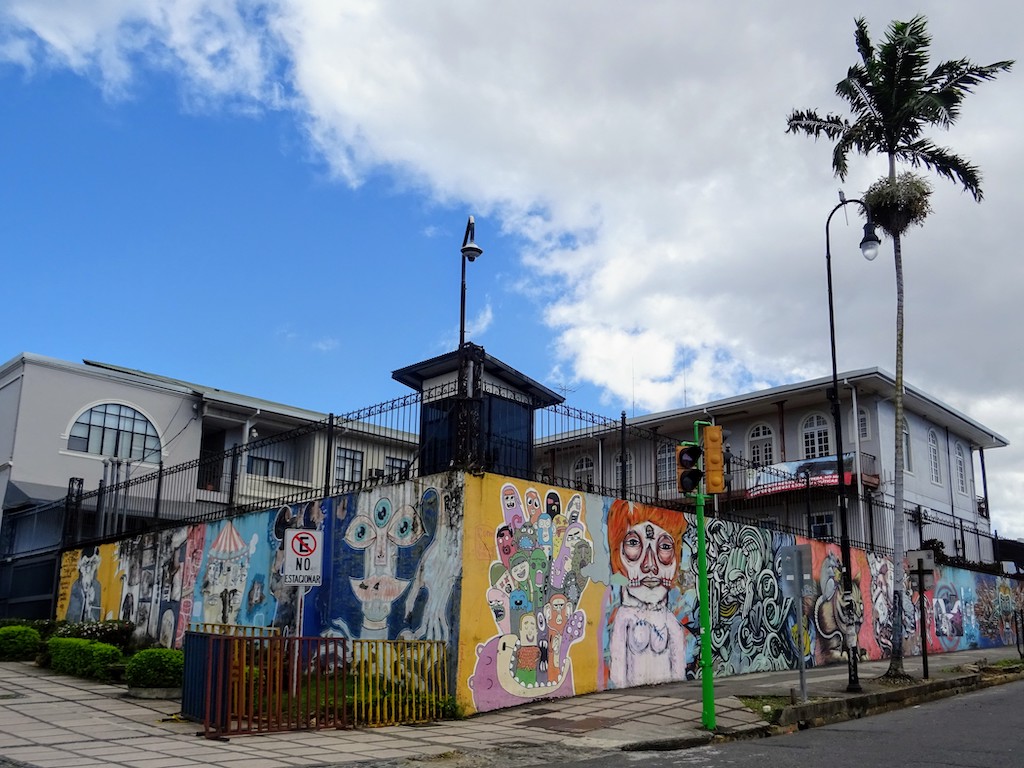

San Jose National Park
Behind the presidential quarter is the San Jose National Park, which we pass through to reach the Plaza de la libertad electoral.
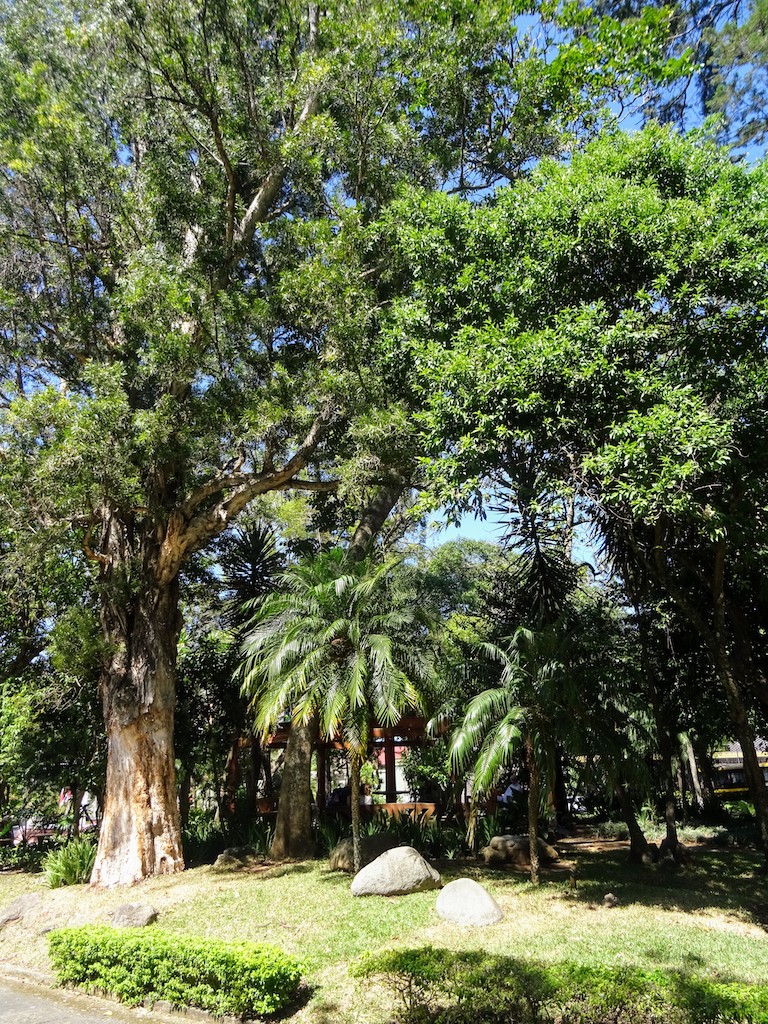

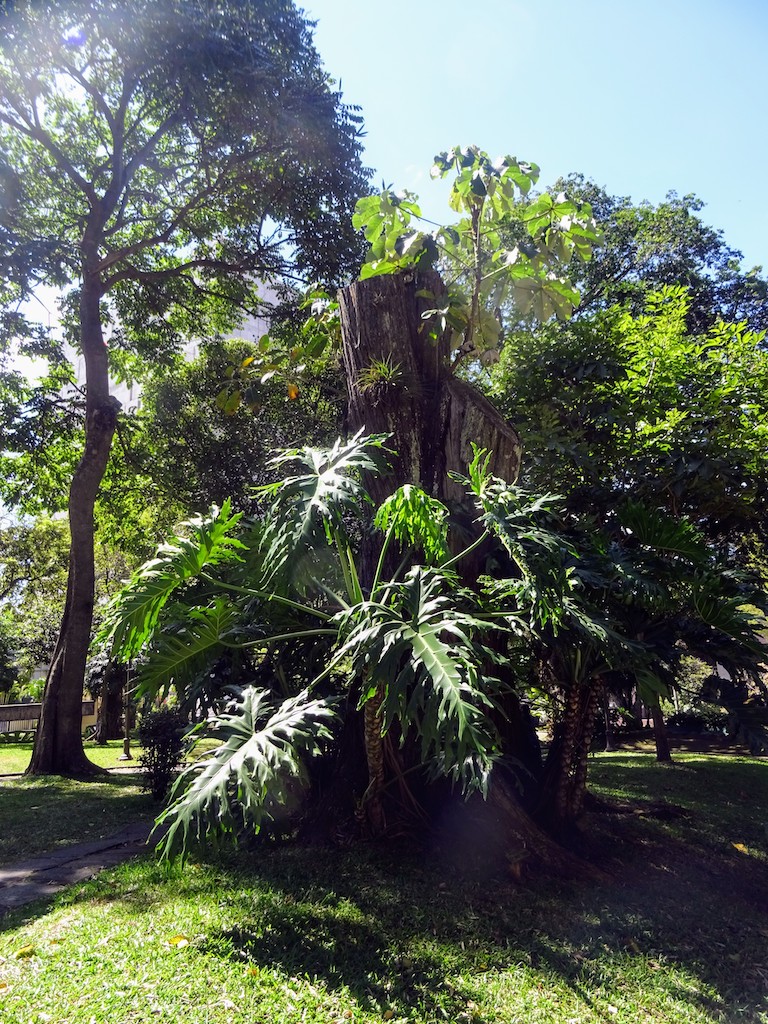

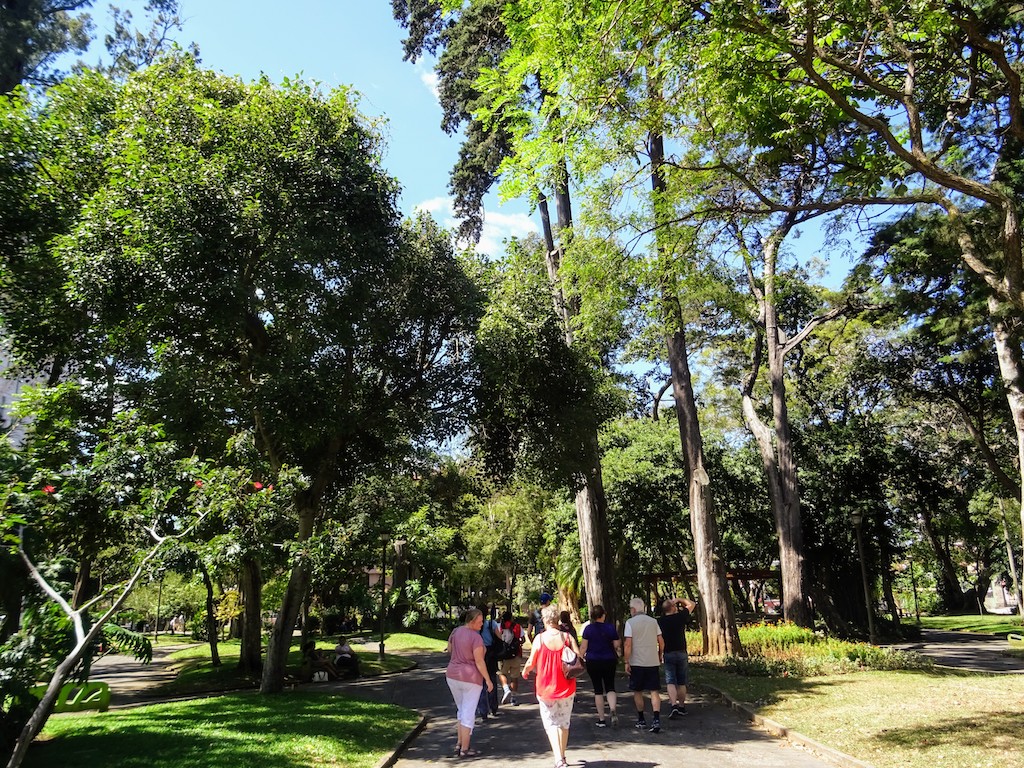

Electoral Freedom Square
The city contains many places commemorating the progress in democracy. The peculiarity of this semi-circular square is that when you stand in the center of the square, spotted by a circle, even a whisper can be perceived by the people sitting on the benches. The sound is reflected on the columns.
If you pass by, try it. It’s quite surprising.
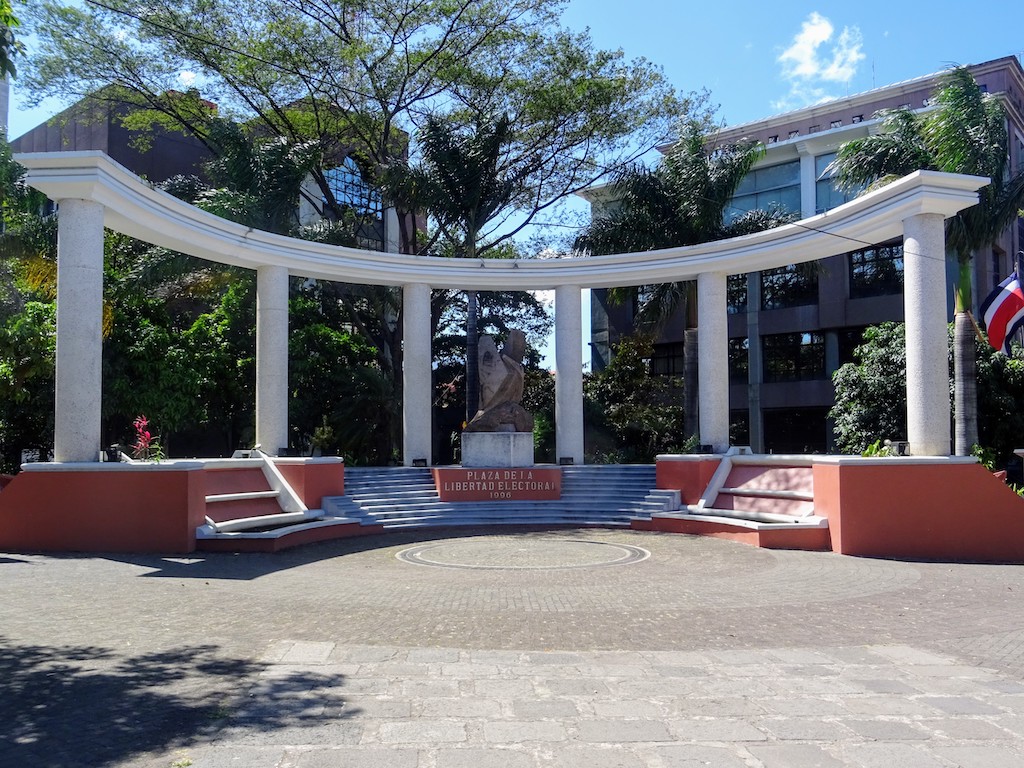

On the left is the National Centre of Culture.
Previously a liquor factory. The production of alcohol was made by private individuals. Unfortunately, the alcohol was adulterated, and many drinkers went blind! I know, it’s horrible! It is to stop this scourge that the city created this factory, in order to offer alcohol good for consumption.
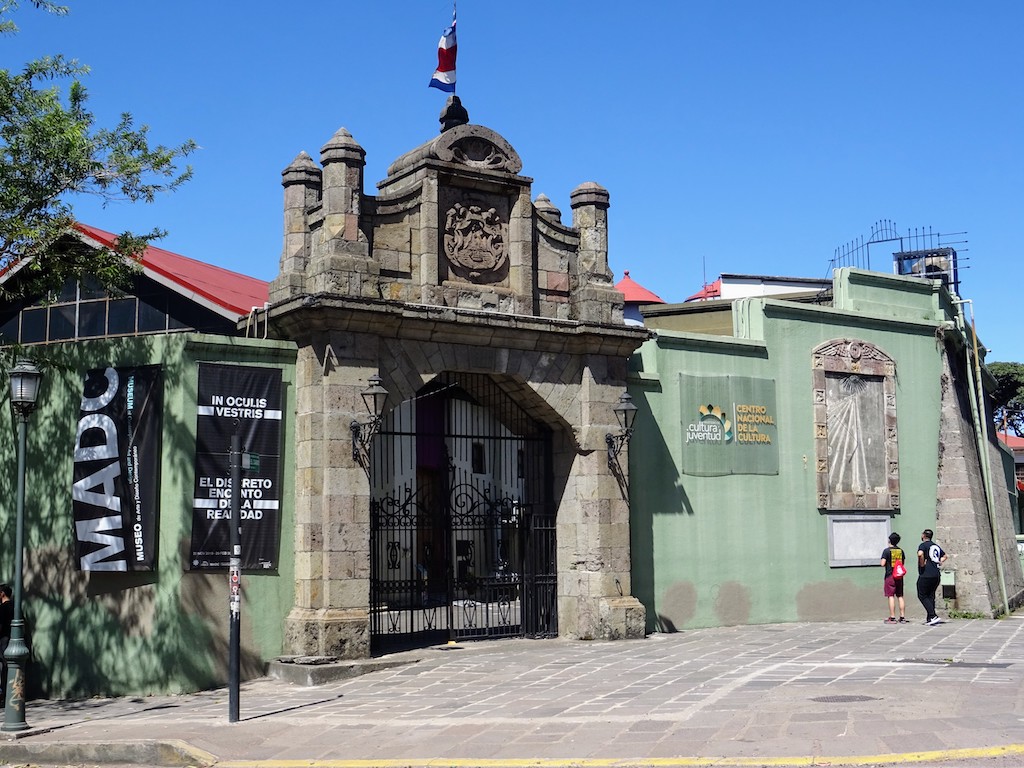

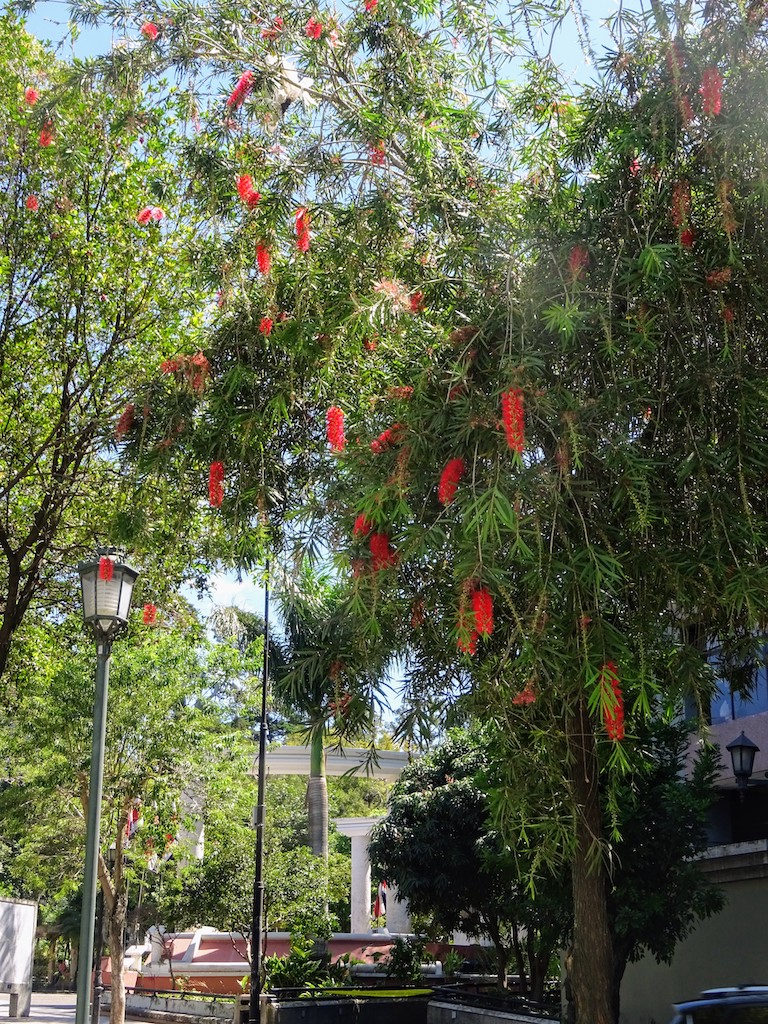

We follow a street that is also one of the important places of San Jose. Indeed, it was the first street that had electric lighting. San Jose is the third city in the world to introduce electric lighting, after New York and Paris.
Yes!
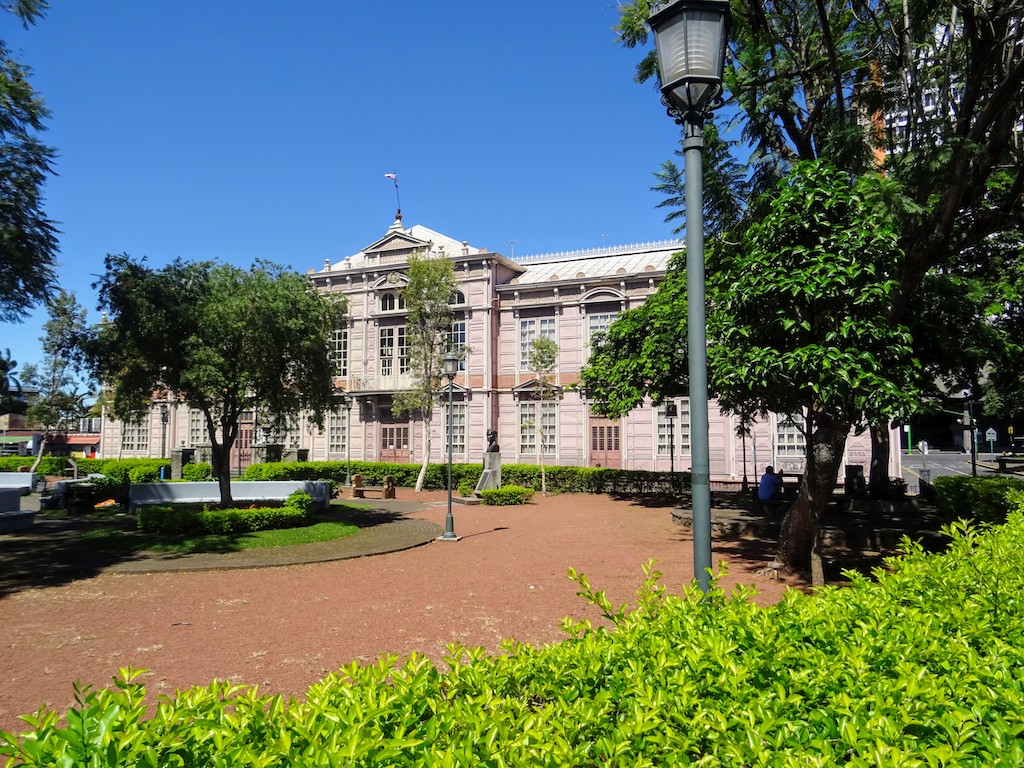

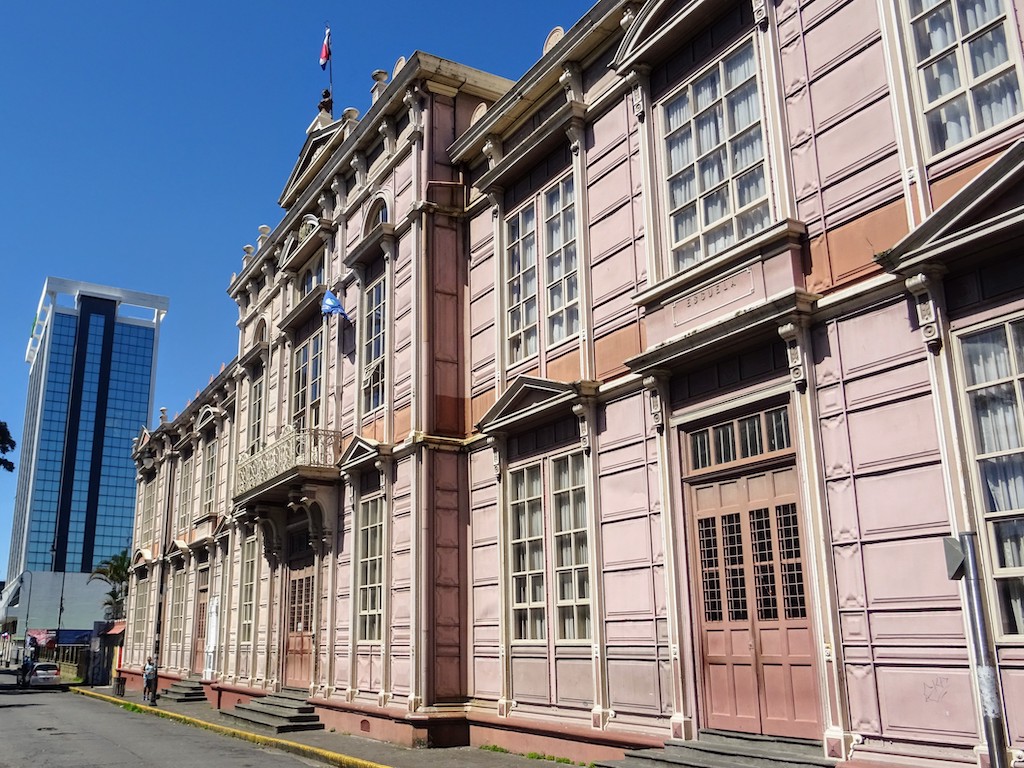

Benuenaventura Orrales school
Here we are in the Jardín de Paz in front of a very special building. This school, the Benuenaventura Orrales school is built of metal, from walls to ceiling. It was then a safe haven in the event of an earthquake. And there are many in Costa Rica.
On the way back, we pass the first cinema of San Jose. Perhaps they projected the famous film “Pura Vida” from which they extracted the famous mantra of Costa Ricain in this cinema!
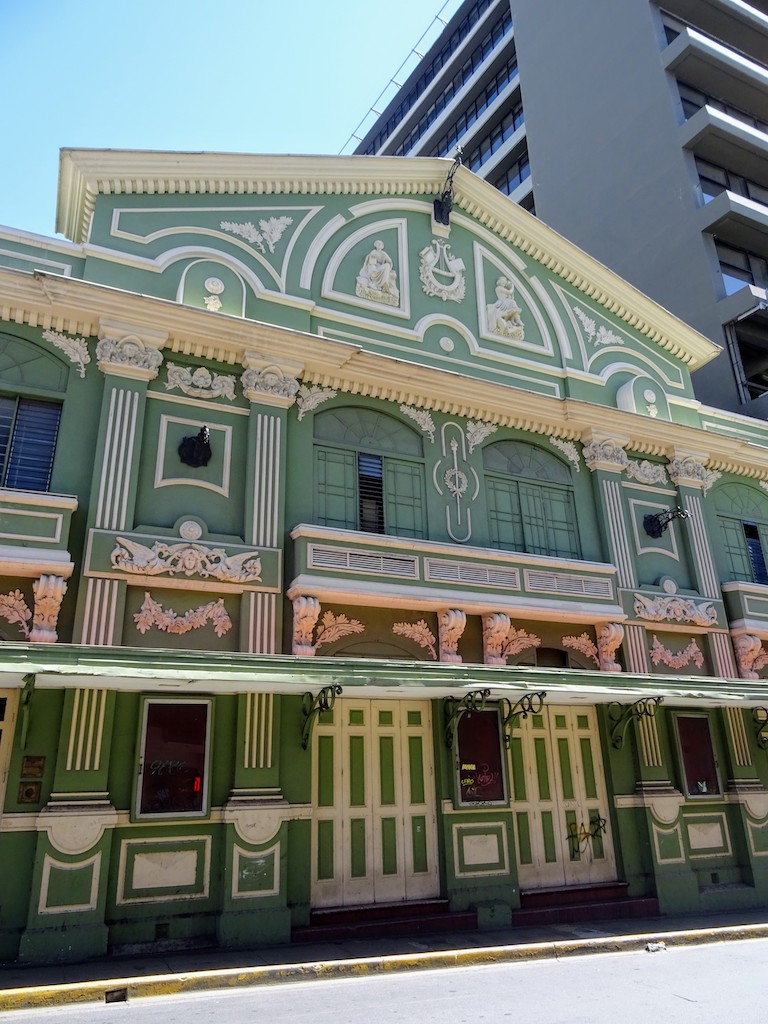

To conclude our visit of San Jose
I really enjoyed visiting the city, but nevertheless, San Jose is not for me a city to visit at all costs. If like me you like to discover the capitals of each country you cross, plan 2-3 days for San Jose.

Thank you for bringing back some good memories of our visit to San Jose a few years ago. Amazing how they abolished their army in favor of education and other positive projects.
I love your pictures, and I hope to visit San Jose again another time.
Karen | https://OurCarpeDiem.com
I’m more than happy to have brought you good memories. I agree with you! They made good decisions to improve life in their country!
Beautiful presentation. Makes me think I need a better blog theme. Enjoyable read, the Chinatown without the Chinese was hilarious. From what I see here, it’s a city I could definitely visit. Right up my street. Thanks for sharing.
Thank you. I’m glad that you fancy to visit the town. And thanks for the theme 😊